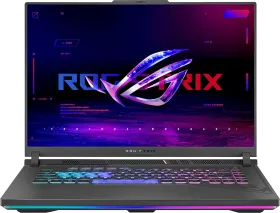Until now, the cash or the sovereign currency notes that you hold were the only legal tender you could use for buying or selling goods or services. However, with the onset of India’s very own digital currency dubbed as e-Rupee proposed by the Reserve Bank of India (RBI), this could change soon. RBI has released a concept note on the Central Bank Digital Currency (CBDC) which is India’s digital currency that can be used as legal tender along with the physical currency notes. Now that you got a gist of the title, let’s dig deeper.
What is Digital Rupee (e-Rupee)?
Call it the e-Rupee or digital rupee or CBDC, it is a digital legal tender issued by the RBI just as the physical currency notes. It holds the exact value as a physical tender and can be exchanged with one another on a one-on-one basis with ease. This particular information was mentioned in the concept note filed by RBI which makes it certain that this is not a bluff.
Why introduce a digital rupee or currency when there’s money in digital form available in India? Well, it’s a question that RBI’s concept note answered. According to the same, a CBDC (or digital rupee) will be a liability to the Reserve Bank of India and will reflect on its balance sheet as well. For context, money in digital form available today is a liability to the commercial bank. This is one of the many differences that set both types of digital currency apart although we will learn more about the merits and demerits of both in times to come.
Features of Digital Rupee
All the transactions of the digital rupee or e-rupee will fall under the jurisdiction of RBI’s rules like the physical notes. Apart from that, it will appear as a liability on the balance sheet of central banks. Apart from that, the digital rupee can be used as a legal tender for payment purposes which includes enterprises, government bodies, and citizens who can use it the same way they use actual bank notes.
Apart from that, RBI has proposed the usage of the e-Rupee without needing a bank account and thus, citizens can simply hold the fungible digital currency just as they would a physical note. Finally, issuing the e-Rupee will bring down the cost of issuance while eradicating the need to carry physical notes. It is because the e-Rupee is totally convertible with actual physical notes issued by banks.
Additionally, the digital rupee will support a high volume and rate of transactions without showing signs of degradation. Currently, UPI has the highest value and rate of transactions in India and with the onset of CBDC, it will soon enter the league of financial instruments for transactions.
RBI concept note also mentions the setting of seamless access for digital currency and a robust mechanism for faster and more efficient resolution of customer grievances.
Why is the RBI Introducing Digital Rupee?
To answer the question of why RBI is introducing the digital rupee, it is because having a digital counterpart of physical notes reduces the cost associated with the management of physical cash. Apart from that, it is a step towards fortifying India’s stand on digitization and making the country less cash economy. There are also merits in enhancing cross-border transactions. Additionally, it will be a legal tender that will safeguard citizens from the high volatility of crypto assets.
Types of CBDC
As per the concept note, CBDC is classified into type types – general purpose or retail (dubbed as CBDC-R) and wholesale (CDBC-W) each has its merits and demerits.
A CBDC-R is reserved for the private sector along with business and non-financial consumers that will help them carry out retail transactions. On the flip side, the wholesale CBDC will be used for the settlement of transfers between banks and will be used by financial institutions to carry out transactions. Of course, we do need more clarity on both the retail and wholesale digital rupee but that’s something we will get to know once it is officially introduced.




































